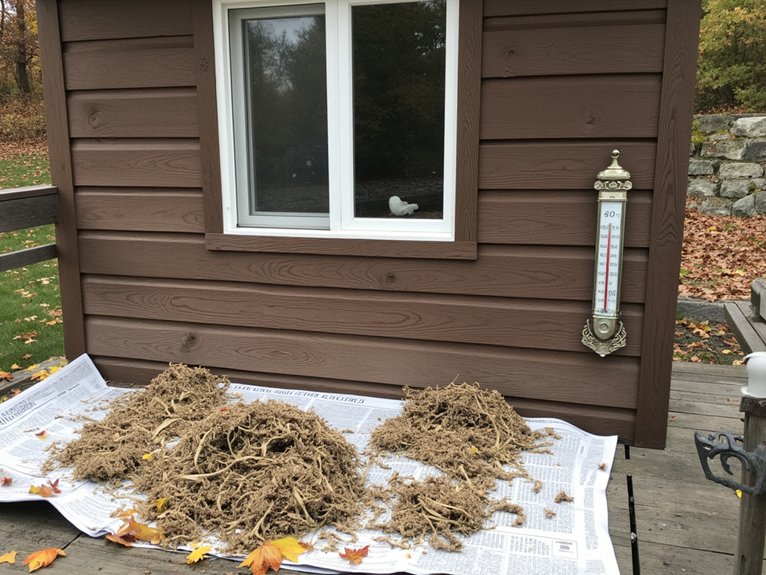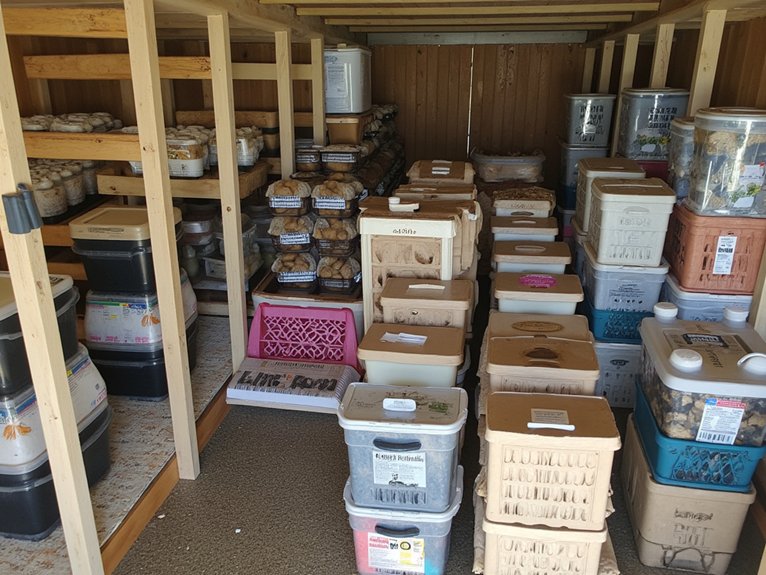A seasoned gardener in Minnesota preserved over 200 dahlia tubers last winter using simple storage techniques, and every single one sprouted vigorously in spring. Successful dahlia overwintering isn’t just about tucking bulbs away until warmer days return – it’s a systematic process that can make or break next season’s blooms. While the basic steps seem straightforward, subtle factors like timing and regional climate variations play vital roles in determining storage success.
Contents
Why Timing Matters for Dahlia Storage Success

When autumn’s chill signals the end of dahlia season, timing becomes critical for successful overwintering. Nature provides clear dormancy signals – leaves turning brown and blooms fading – that indicate the perfect moment to begin storage preparation.
The plant’s natural cycle matters for tuber health. As days shorten, dahlias direct their energy into their tuberous roots, storing nutrients for next year’s growth. Waiting for completely brown foliage guarantees the tubers have packed away maximum resources.
“Brown leaves are your green light to start the storage process,” says Master Gardener Jane Smith. “Rush the timing, and you’ll compromise next season’s blooms.”
Essential Steps Before Winter Storage
Proper preparation sets the stage for successful dahlia storage through winter’s cold months. For ideal tuber care, wait until leaves turn completely brown before taking action. “This natural process allows the plant to store energy in its roots,” explains dahlia expert Sarah Chen.
- Cut foliage to 2 inches above soil level using clean, sharp pruners
- Dig carefully 12 inches from stems using a pitchfork
- Remove excess soil gently to protect root health
- Allow tubers to dry for 2-3 days in a frost-free location
- Label varieties clearly before storing in a 40-50°F space
Your Guide to Regional Storage Methods

Depending on your growing zone, dahlia storage methods can vary greatly from region to region. “In zones 8-10, you’ll often get away with leaving tubers in the ground under mulch, while colder areas require indoor storage,” notes dahlia specialist Mark Thompson.
Regional climates play an essential role in tuber maintenance. Southern gardeners can protect their dahlias with a thick layer of mulch, while northern growers must dig up and store tubers indoors. “Success comes from matching storage methods to your local conditions,” explains Thompson. He recommends monitoring soil temperatures and frost dates to determine the best approach for each specific region.
Perfect Storage Conditions That Prevent Problems
Creating ideal storage conditions sets the foundation for healthy dahlia tubers throughout winter. The key lies in maintaining consistent temperature and humidity control. Most dahlias thrive when stored at 40-50°F with moderate humidity levels around 50%.
“Temperature monitoring is essential – too warm and they’ll sprout early, too cold and they’ll freeze,” notes dahlia expert Sarah Chen. “Check your storage area weekly.”
For best results:
- Use a thermometer to track temperatures
- Place a humidity gauge nearby
- Keep area dark and well-ventilated
- Store away from fruits that emit ethylene gas
- Rotate tubers monthly to prevent pressure damage
Spring Preparation and Future Growth

When late winter begins to fade into early spring, it’s time to evaluate your stored dahlia tubers for the upcoming growing season. Look for firm tubers showing signs of spring awakening – small pink or green buds emerging from the eyes.
Follow these growth strategies for ideal results:
- Remove tubers from storage 2-3 weeks before last frost
- Check each tuber for rot or shriveling
- Discard any damaged pieces
- Place healthy tubers in shallow trays of moist potting soil
- Keep at 60-65°F in bright, indirect light
- Water sparingly until sprouts emerge
- Transplant outside after frost danger passes
